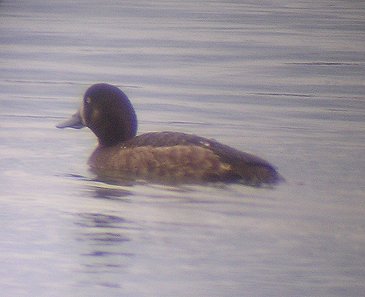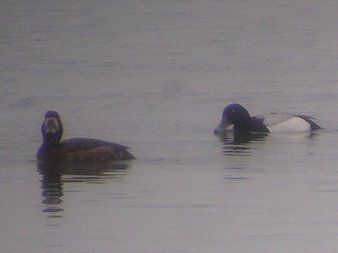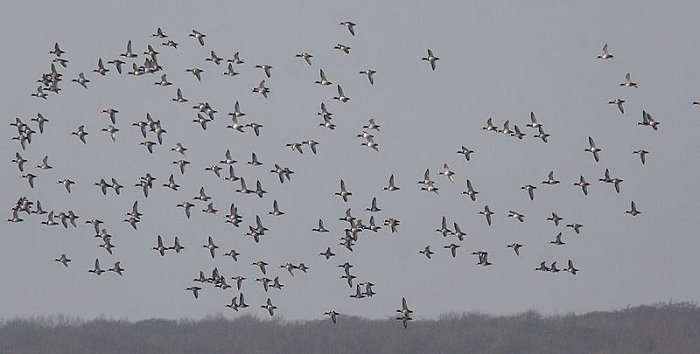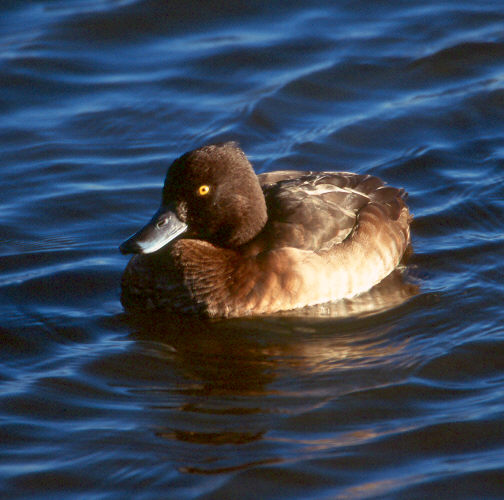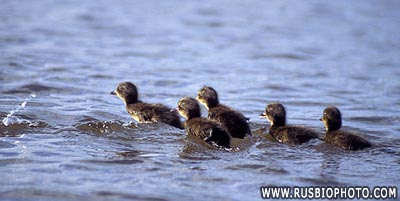Subfamily:
Aythyinae
Diving
ducks - Some 15 species of diving ducks, of worldwide distribution
Genus: Netta, Red-crested Pochard
and allies - 4 species, one probably extinct.
Genus: Aythya, pochards,
scaups, etc. - 12 species
Family
Aythinae
Genus
Aythya
A
diving duck which eats seeds, roots, aquatic plants and grasses as
well as invertebrates and small fish.
Pochards may also be seen filtering mud on the shoreline.
It is found North of the equator from Iceland and western Europe
to central Asia and sw Siberia and western Yakutia.
South of this the range covers Spain and then east through France,
Tunisia the Balkans to Kazakhstan and ne China.
Winters farther south in the tropics. [1]
Genus
Aythya - pochards, scaups
Aythya ferina,
Common Pochard
Taffeland
Aythya valisineria, Canvasback Kanvasand
Aythya americana, Redhead Kobberhodeand
Aythya collaris, Ring-necked Duck Ringand
Aythya nyroca, Hvitøyeand Ferruginous Pochard
Aythya innotata, Madagascar Pochard Alaotraand(thought
extinct, found again 2006)
Aythya baeri, Baer's Pochard Amurand
Aythya australis, White-eyed Duck Australdykkand
Aythya fuligula, Tufted Duck
Toppand
Aythya novaeseelandiae, New Zealand Scaup Maoridykkand
Aythya marila, Greater
Scaup Bergand
Aythya affinis, Lesser Scaup Purpurhodeand |
Greater
Scaup, Aythya marila 
.
En. Scaup, Da. Bjergand, Du. Toppereend, Fi. Lapasotka,
Fr. Fuligule milouinan,
Ge. Bergente, It. Moretta grigia, No. Bergand, Sp. Porrón bastardo,
Sw. Bergand
Greater and lesser scaup are often found together, but the
larger size of the greater scaup is very obvious.
Male greater scaup also have a larger more round, green-tinted
head than male lesser scaup.
Male greater scaup have a glossy black head tinted green.
The neck, breast, and upper mantle are glossy black and the
flanks and belly are white sometimes with gray vermiculations
on the lower flanks. The back is whitish with fine black vermiculations
and the tail, upper and
under-tail coverts are black.
The wing has a broad white speculum spanning nearly the length
of the primaries and secondaries.
The bill is a light blue-gray with a black nail, the legs and
feet are gray, and the iris is yellow.
Relatively silent except in display, the male utters a soft
cooing as well as whistling notes in courtship.
Female greater scaup are brown with white oval patches around
their bills.
The bill is similar to that of the male, but slightly duller
and the legs and feet are gray.
The female has harsh, gruff notes typical of the genus. |
Greater scaup breed on the tundra and in the boreal forest zones from
Iceland across northern Scandinavia, northern Russia, northern Siberia
and the western North American Arctic.
It is estimated that three quarters of the North American population
breeds in Alaska. Greater scaup nest predominantly
on islands in large lakes and lay an average of 9 eggs.
Contaminants, lower female survival, and reduced recruitment due
to changes in breeding habitat or food resources
are thought to be the primary factors contributing to the decline.
The 2001 breeding population survey places the greater scaup population
in USA at about 406,000 birds,
an 8% decrease from last year's estimate.
In the 1970's the population in North America was estimated to 750.000
birds.
Food habits: Greater scaup dive to feed on aquatic plants and animals.
In coastal areas, mollusks constitute the principle items
of the diet. In freshwater habitats, seeds, leaves, stems, roots,
and tubers of aquatic plants (sedges, pondweeds, muskgrass,
wild celery, etc.) are important items
Text: www.ducks.org/
Common
Pochard, Taffeland, Aythya ferina

© http://www.ecosystema.ru/
Tufted
Duck, Aythya fuligula 
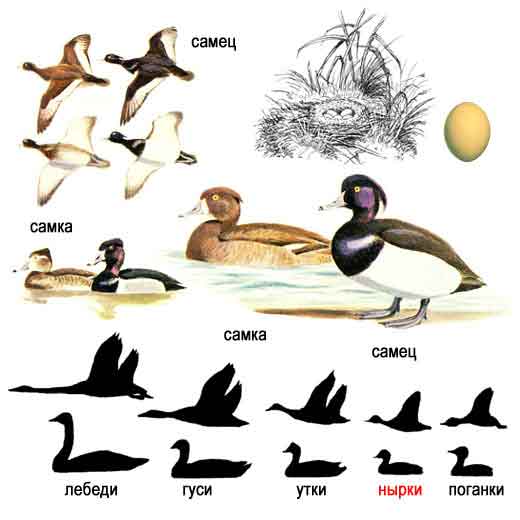
© http://www.ecosystema.ru/
Tufted
Ducks are divers and can dive to a depth of 14 metres in search
of its wide variety of animal and vegetable food,
but as you see, it is also good at flying....
The male has a distinctive black and white pattern for most of the
year. In certain lights it is possible to see the metallic purple
sheen on the head which sets off his yellow eye. He has a tuft at
the back of the head which is longer during the breeding season.
The female is generally brown with paler flanks and a yellow eye.
The
female nests on the ground near the water, and like the Eider beds
with downs.
Normally it has from 6 to 12 light greygreenish eggs. The female
uses 24 days to have the chickens come out,
then after a few hours they are off to the water, and 6 weeks later
they can fly.
During
the winter, most of the birds travel as far south as to Norther
Africa and India.
|




